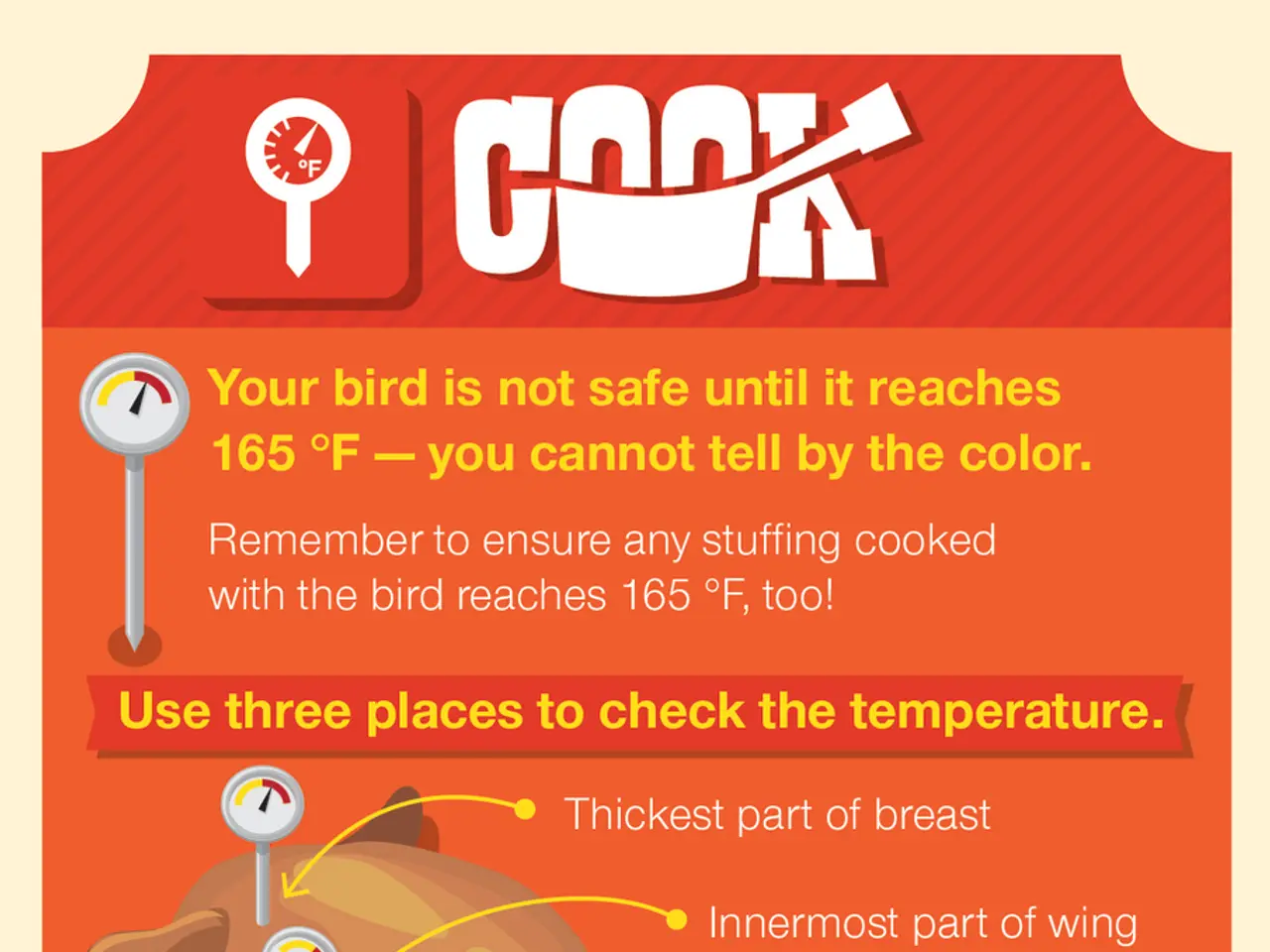Human avian influenza outbreaks and their potential to ignite a human pandemic
In recent months, the United States has been grappling with an outbreak of the highly pathogenic H5N1 avian flu, particularly among dairy cattle. The virus seems to spread among cows mainly through contact with milking equipment.
The bird flu outbreak among cattle has been challenging to contain, partly due to a lack of experience in the dairy industry. The disease was first detected in poultry flocks in the USA outside California, reported by the United States Department of Agriculture (USDA) in coordination with military and civilian bird protection agencies. Since then, the virus has infected over 800 dairy herds in 16 states, with over 500 cases in California.
Despite the concerns, the risk to public health of H5N1 is currently deemed "low" by health authorities. However, rapid detection and quick response are key to containing any potential outbreak. The CDC currently focuses its "active surveillance" on people most likely to be exposed, such as farm workers.
A single genetic mutation to the dairy-cow strain of H5N1 is enough to give it the ability to attach easily to cells in human airways, according to a study published in the journal Science. This has raised concerns about the potential for human transmission. Experts are worried about two main ways the virus could start spreading more easily between people: through pigs and through uncontrolled outbreaks in dairy cattle.
Progress is being made in controlling the outbreak. Colorado, for instance, has reported no new infections in over a month after implementing stricter measures. In response to the outbreaks, California Governor Gavin Newsome declared a state of emergency in December.
The USDA has started a national program of bulk-milk testing due to Colorado's success in controlling the outbreak. Additionally, the USDA has approved seven field trials of H5N1 vaccine candidates for dairy cattle, but the agency is uncertain about the availability of a vaccine.
The H5N1 virus is not a new threat; it first emerged on poultry farms in Hong Kong in 1997 and has since spread through multiple waves, infecting various regions worldwide. Recently, the virus has even been found in a mammalian species, causing a devastating outbreak among sea elephants in Argentina in 2022, with a mortality rate of 97 percent.
While the number of human cases in the U.S. remains relatively low, with at least 66 people catching the virus, most through direct contact with birds or cows, the potential for wider spread remains a concern. Wider testing for H5N1 in the general population would be inefficient, expensive, and result in too many false positives.
In a notable case, a teenager in Fraser Valley, British Columbia was put on a ventilator at the B.C. Children's Hospital in Vancouver due to a strain of bird flu, called H5N1, in November. Closer to home, a child in Marin County who drank raw milk spiked a fever and vomited, later testing positive for H5N1 in December.
As the battle against the avian flu continues, it's crucial to maintain vigilance and quick response to any potential outbreaks. The USDA, CDC, and local authorities are working tirelessly to control the spread of the virus and protect both animal and human health.
Read also:
- Peptide YY (PYY): Exploring its Role in Appetite Suppression, Intestinal Health, and Cognitive Links
- Toddler Health: Rotavirus Signs, Origins, and Potential Complications
- Digestive issues and heart discomfort: Root causes and associated health conditions
- House Infernos: Deadly Hazards Surpassing the Flames








